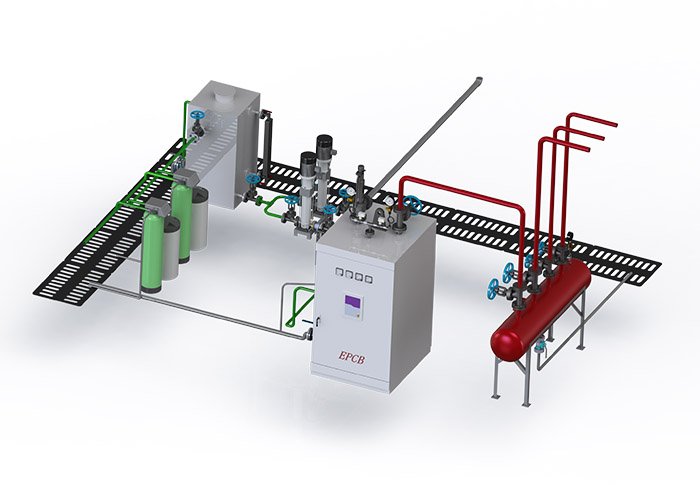At EPCB, we know the heart of any industrial steam boiler system is its ability to efficiently transfer thermal energy. But have you ever wondered what makes this process so critical for industrial operations?
At the core of Clayton's design is a counterflow monotube Heat Exchanger. Here, heat transfer occurs from combustion gases to feedwater via a spiral-wound coil. This unique design controls water flow inside the tubes and air flow over them, maximizing energy utilization.
Our comprehensive guide will explore how modern steam boiler heat exchangers work. We'll discuss their importance in industrial settings and their impact on overall system efficiency. We'll share insights into the fundamental principles behind heat transfer in industrial boilers and how proper design maximizes energy use.
The Critical Role of Heat Exchangers in Industrial Steam Boilers
In the world of industrial steam boilers, heat exchangers are the unsung heroes that ensure efficient steam generation. At EPCB, we design our heat exchangers to be the critical interface where thermal energy transfers from combustion gases to water, creating the steam that powers industrial processes.

What Is a Steam Boiler Heat Exchanger?
A steam boiler heat exchanger is a device that facilitates the transfer of heat from the combustion gases to the water within the boiler, enabling efficient steam generation. Our heat exchangers are engineered to maximize contact between hot gases and water-carrying tubes, creating optimal conditions for efficient heat transfer. This design ensures that our industrial heat exchangers can handle higher pressures and temperatures, distinguishing them from residential ones.
Heat Exchanger Type | Key Features | Benefits |
Industrial Heat Exchanger | Robust construction, high-pressure handling | Efficient heat transfer, durability |
Residential Heat Exchanger | Compact design, lower pressure handling | Suitable for domestic use, cost-effective |
How Heat Exchangers Impact Overall Boiler Performance
The performance of your heat exchanger directly impacts fuel consumption, steam quality, and overall operational efficiency of your industrial boiler system. By investing in a quality heat exchanger, you can improve energy efficiency, reduce maintenance costs, and extend equipment life in demanding industrial environments. At EPCB, we emphasize the importance of a well-designed heat exchanger in achieving these benefits.
EPCB's Advanced Heat Exchanger Technology

At EPCB, we're proud to introduce our latest advancements in heat exchanger technology, designed to revolutionize industrial steam boiler systems. Our decades of engineering experience in industrial steam systems have culminated in the development of proprietary heat exchanger technology.
Our heat exchanger designs incorporate innovative flow patterns that maximize surface area contact while minimizing pressure drop, creating optimal conditions for thermal transfer. This results in improved efficiency and reliability for our industrial boilers.
Our Proprietary Heat Exchanger Design
The coil in our heat exchangers controls water flow inside the tubes and air flow over them. This maximizes heat transfer. Our design also allows for thermal expansion and contraction without causing stress, ensuring durability and longevity.
Our industrial boilers feature heat exchangers with precisely calculated tube arrangements. These arrangements optimize turbulence for better heat transfer while maintaining structural integrity. This attention to detail enables our boilers to outperform industry standards for efficiency and reliability.
Engineering Excellence in Every Component
At EPCB, our engineering team has overcome common heat exchanger challenges like thermal stress, corrosion, and scaling. We've done this through intelligent material selection and geometry. Our commitment to continuous improvement has led to heat exchanger designs that excel in demanding industrial applications.
By focusing on engineering excellence in every component, we've developed heat exchangers that not only meet but exceed industry standards for performance and durability. This dedication to quality is reflected in every aspect of our industrial steam boilers.
Heat Transfer Principles in Steam Boiler Operation
Heat transfer is the backbone of steam boiler operation, and optimizing this process is crucial for achieving high efficiency. At EPCB, our steam boiler heat exchangers are designed to maximize heat transfer. This ensures that our industrial boilers perform at their best.
Conduction, Convection, and Radiation in Heat Exchangers
In industrial steam boilers, heat transfer occurs through three primary mechanisms: conduction, convection, and radiation. Conduction involves the direct transfer of heat between objects in physical contact. Convection occurs when heat is transferred through the movement of fluids. Radiation is the transfer of heat via electromagnetic waves. Our heat exchangers are designed to optimize these mechanisms, ensuring efficient heat transfer from combustion gases to water.
Our engineers understand that the interplay between these heat transfer mechanisms is complex. By carefully designing our heat exchangers, we create conditions that enhance all three processes. This leads to improved boiler efficiency.
Maximizing Heat Transfer Efficiency
To maximize heat transfer efficiency, our heat exchangers employ a counterflow design. This means that the flow of water in the coil counters the flow of hot gases. This maintains a significant temperature differential throughout the heat exchanger. This design significantly improves efficiency compared to parallel flow arrangements.
Our heat exchangers also create controlled turbulence to break up boundary layers. This enhances convective heat transfer without causing excessive pressure drop. By applying these principles, we achieve real-world performance gains in industrial applications where efficiency directly impacts the bottom line. Our commitment to optimizing heat transfer in steam boiler operation is reflected in the design and performance of our heat exchangers.
Types of Steam Boiler Heat Exchangers

At EPCB, we offer a range of heat exchangers for industrial steam boilers, designed to optimize performance and efficiency. Our diverse portfolio includes shell and tube heat exchangers, spiral-wound coil designs, and counterflow heat exchangers. Each is tailored to specific industrial applications.
Shell and Tube Heat Exchangers
Our shell and tube heat exchangers feature robust construction with multiple tube passes through a cylindrical shell. This design provides excellent heat transfer capacity, making them ideal for high-pressure industrial applications. The tubes are carefully arranged to maximize the heat exchange between the steam and the hot gases.
Spiral-Wound Coil Designs
We utilize spiral-wound coil designs in our heat exchangers to offer advantages in thermal expansion management and uniform heat distribution. This design is valuable in variable-load industrial environments, where it helps maintain efficiency and performance. The spiral-wound coils are made from smooth ASME SA-178 carbon steel, ensuring durability and optimal heat transfer.
Counterflow Heat Exchangers
Our counterflow heat exchangers are designed to enhance the temperature difference during heat transfer. By positioning hot gases and feedwater in opposite directions, we achieve superior efficiency over parallel flow designs. This setup is essential for boosting the performance of industrial steam boilers.
Type of Heat Exchanger | Key Features | Applications |
Shell and Tube | Robust construction, multiple tube passes | High-pressure industrial applications |
Spiral-Wound Coil | Thermal expansion management, uniform heat distribution | Variable-load industrial environments |
Counterflow | Maximized temperature differential, high efficiency | Industrial steam boilers requiring optimal performance |
Understanding the various heat exchanger types and their uses helps industries choose the right one. This choice depends on factors like pressure needs, space, and efficiency goals.
Materials and Construction of Quality Heat Exchangers
EPCB's dedication to quality is evident in our selection of materials for our heat exchangers. We use smooth ASME SA-178 carbon steel for our tubes. This material excels in thermal conductivity and structural integrity under high temperatures and pressures.
Carbon Steel vs. Cast Iron Components
We compare carbon steel and cast iron for our heat exchangers. Carbon steel is chosen for its high thermal conductivity and ability to handle high temperatures and pressures. It's ideal for industrial boiler use. Cast iron is used in specific applications where its properties are beneficial.
Our heat exchangers feature high-grade carbon steel. This material ensures excellent thermal conductivity and structural integrity. It impacts corrosion resistance, thermal cycling durability, and the overall service life of industrial boiler heat exchangers.
Durability Considerations for Industrial Applications
Durability is key in heat exchanger construction for industrial boilers. At EPCB, our heat exchangers are built to endure continuous industrial use. Our quality control ensures consistent material properties and construction standards, leading to long-lasting performance.
The construction method affects durability and efficiency. Welding layers of spiral-wound coils in a continuous flow path ensures proper air flow and eliminates dead spots in the exhaust gas flow path.
The Anatomy of a Steam Boiler Heat Exchanger
At EPCB, we know the heart of any industrial steam boiler is its heat exchanger. Our steam boiler heat exchangers are designed for maximum efficiency and reliability in demanding environments.
Main Generating Section
The main generating section is crucial in our steam boiler heat exchangers. It has 16 spirally wound layers, with coil diameter increasing to accommodate feedwater expansion into steam. This design optimizes heat transfer and steam generation efficiency.
Water Wall Sections
Our water wall sections enhance heat transfer and protect the boiler's outer shell from excessive temperatures.
Tube Arrangement and Flow Patterns
The tube arrangement and flow patterns in our heat exchangers are designed for efficient steam generation. The tube configurations maximize heat transfer surface area while maintaining structural integrity under high temperatures. This ensures reliable operation in industrial applications.
By designing each component of our steam boiler heat exchangers carefully, we ensure they work together seamlessly. This integrated approach enables our boilers to meet the demanding requirements of various industrial processes.
How Our Heat Exchangers Maximize Thermal Efficiency
At EPCB, we're dedicated to offering superior steam boiler solutions that enhance thermal efficiency. Our heat exchangers are key to achieving this goal.
Counterflow Design Advantages
We've designed our heat exchangers with counterflow principles to maintain a constant temperature difference. This setup ensures the coolest water meets the coolest gases and the hottest water meets the hottest gases. This creates the perfect conditions for thermal transfer, leading to higher efficiency and performance in our steam boilers.
Optimized Surface Area for Heat Transfer
Our heat exchangers boast optimized surface area, thanks to carefully designed fins, baffles, and tube arrangements. Our engineers meticulously calculate the ideal surface area for specific industrial needs, balancing efficiency with practical considerations like size, weight, and cost. This optimization results in significant efficiency gains, directly translating to fuel savings in industrial operations.
By integrating counterflow design with optimized surface area, we've developed heat exchangers that greatly enhance the thermal efficiency of our steam boilers. This leads to cost savings and reduced environmental impact for our clients.
Industrial Applications of EPCB Steam Boilers
At EPCB, our steam boilers cater to a wide range of industrial applications across various sectors. Our advanced heat exchanger technology ensures our boilers meet the diverse needs of industries such as manufacturing, chemical processing, and food production.
Manufacturing and Processing Industries
In manufacturing and processing industries, our steam boilers provide reliable thermal energy for processes requiring precise temperature control and consistent steam quality. This is vital for maintaining product quality and optimizing production processes.
Chemical and Pharmaceutical Applications
Our heat exchangers are designed to meet the stringent requirements of chemical and pharmaceutical applications, where purity and precise control are paramount. We ensure our steam boilers deliver the high-quality steam needed for these sensitive processes.
Food Processing Requirements
Our food processing clients rely on our steam boilers for cooking, sterilization, and packaging applications where food safety depends on reliable steam generation. We understand the importance of maintaining high standards of hygiene and efficiency in food processing.
By providing high-quality steam boilers, we help companies across various sectors improve their operational efficiency, reduce downtime, and meet strict regulatory requirements. Our commitment to delivering reliable and efficient steam generation solutions has made us a trusted partner in the industrial sector.
Maintenance Best Practices for Heat Exchangers

Proper maintenance of heat exchangers is essential for ensuring the longevity and efficiency of industrial boilers. At EPCB, we recommend a comprehensive maintenance program to keep your heat exchangers operating at peak performance.
Preventing Scale and Corrosion
Scale and corrosion are common issues that can significantly reduce the efficiency of heat exchangers in steam boilers. Regular monitoring of water quality is crucial to prevent these problems. We advise implementing a robust water treatment program to minimize the risk of scale buildup and corrosion, protecting your boiler investment.
Inspection and Cleaning Procedures
Regular checks and cleanings are crucial for heat exchanger efficiency. We suggest inspecting for wear, corrosion, or scale buildup. Cleaning methods vary by heat exchanger type, using chemicals or mechanical methods to enhance performance.
Water Treatment Importance
Feedwater quality is critical for boiler operation. Proper water treatment prevents scale, corrosion, and efficiency loss. Our Chemical Water Treatment division supports keeping your steam system efficient.
Following these maintenance tips extends heat exchanger life, cuts costs, and boosts efficiency in industrial boilers.
Troubleshooting Common Heat Exchanger Issues

We're experts in steam boiler tech, knowing how to tackle heat exchanger problems. At EPCB, our service team has tackled many heat exchanger challenges.
Spotting early warning signs is key. Our team has pinpointed common issues that can lower efficiency and increase maintenance costs if not fixed quickly.
Identifying Performance Problems
To diagnose heat exchanger issues, interpreting performance indicators is crucial. Look at temperature differences, pressure drops, and steam quality. Monitoring these helps catch problems early.
Performance Indicator | Normal Range | Abnormal Reading | Possible Cause |
Temperature Differential | 10-20°C | >25°C | Scaling or Fouling |
Pressure Drop | 0.5-1.5 bar | >2 bar | Blockage or Corrosion |
Steam Quality | >95% |
| Insufficient Heat Transfer |
Solutions for Extended Equipment Life
Our troubleshooting method quickly finds the root cause, not just symptoms. We offer solutions like retrofitting, upgrading components, and adjusting operations to revitalize heat exchangers.
Our preventive maintenance tips help avoid shutdowns and costly repairs. They ensure efficient heat transfer in industrial settings.
Selecting the Right Steam Boiler Heat Exchanger for Your Needs

Our team at EPCB helps choose the right steam boiler heat exchanger for you. At EPCB, we know the importance of a well-designed heat exchanger in industrial systems. Economizers preheat feedwater, reducing energy needed to make steam, improving fuel efficiency.
Capacity and Performance Considerations
When choosing a steam boiler heat exchanger, several critical factors come into play. These include the steam demand, pressure needs, and efficiency targets. Our team will guide you through the essential capacity and performance aspects to consider. For example, non-condensing economizers are ideal for high flue gas temperatures. On the other hand, condensing economizers are better suited for lower temperatures.
Industry-Specific Requirements
Diverse industries have unique needs for steam boiler heat exchangers. Leveraging our specialized knowledge, we suggest heat exchanger designs tailored to each sector's challenges. This includes factors like fuel type, available space, regulatory demands, and plans for future growth. We tailor our designs to fit your exact needs, ensuring peak performance in your specific industrial setting.
Conclusion
EPCB is at the forefront of industrial steam boiler solutions, continually advancing heat exchanger technology. Our relentless pursuit of innovation has solidified our position as a leader in industrial steam boiler systems.
We invest heavily in research and development to boost heat transfer efficiency and material durability. This effort has led to our customers experiencing lower fuel consumption and reduced maintenance costs. They also report improved productivity after adopting our advanced heat exchanger technology.
At EPCB, we offer comprehensive support services, including expert installation, regular maintenance, and swift response to operational issues. By choosing EPCB, you partner with a company that prioritizes efficiency, reliability, and return on investment in steam generation and boiler operations.
FAQ
What is the primary function of a heat exchanger in a steam boiler system?
The primary function of a heat exchanger in a steam boiler system is to transfer heat from combustion gases to water. This process generates dry steam for various industrial applications.
How does the design of a heat exchanger impact its efficiency?
The design of a heat exchanger, including surface area, tube arrangement, and flow patterns, significantly impacts its efficiency. These factors maximize heat transfer between combustion gases and water.
What are the benefits of using a counterflow heat exchanger design?
Counterflow heat exchanger designs offer several benefits. They improve thermal efficiency, increase heat transfer rates, and reduce energy consumption.
How often should heat exchangers be inspected and cleaned?
Heat exchangers should be inspected and cleaned regularly. The frequency depends on operating conditions, water quality, and industry-specific requirements.
What materials are commonly used in the construction of heat exchangers?
Carbon steel and cast iron are commonly used in heat exchanger construction. The choice depends on durability, corrosion resistance, and cost.
How can scale and corrosion be prevented in heat exchangers?
Scale and corrosion can be prevented through proper water treatment, regular cleaning and inspection, and the use of corrosion-resistant materials.
What are the key considerations when selecting a heat exchanger for industrial applications?
Key considerations include capacity, performance requirements, industry-specific needs, and durability and maintenance needs.
How can heat exchanger performance problems be identified and addressed?
Performance problems can be identified through regular monitoring and inspection. They can be addressed through cleaning, maintenance, and potentially, replacement or repair of damaged components.
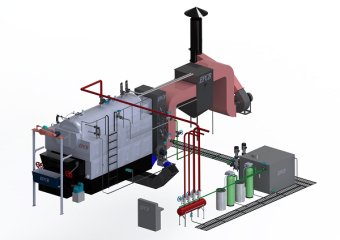 Steam Boiler
Steam Boiler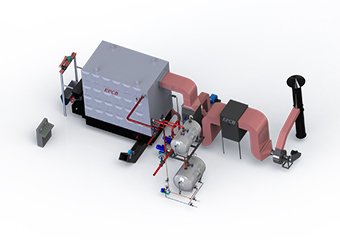 Thermal Oil Boiler
Thermal Oil Boiler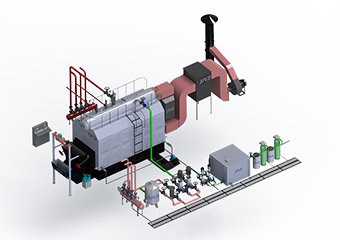 Hot Water Boiler
Hot Water Boiler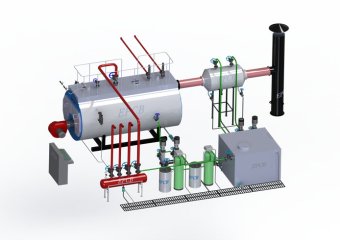 Steam Boiler
Steam Boiler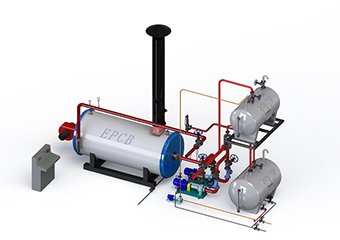 Thermal Oil Boiler
Thermal Oil Boiler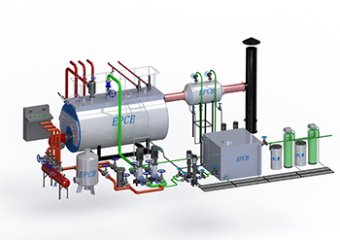 Hot Water Boiler
Hot Water Boiler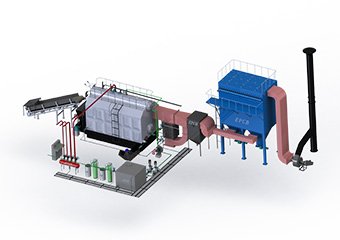 Steam Boiler
Steam Boiler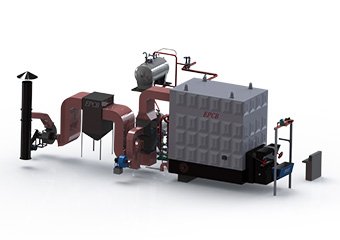 Thermal Oil Boiler
Thermal Oil Boiler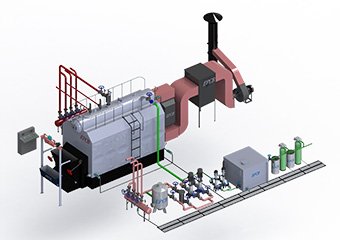 Hot Water Boiler
Hot Water Boiler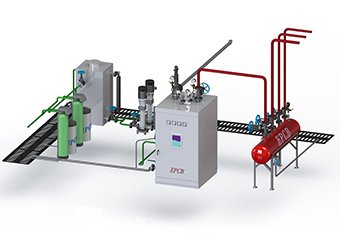 Steam Boiler
Steam Boiler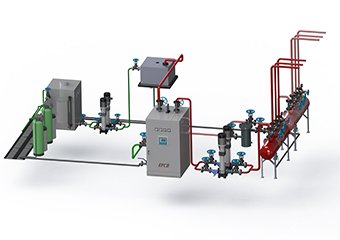 Hot Water Boiler
Hot Water Boiler




















